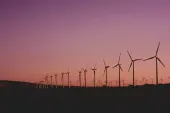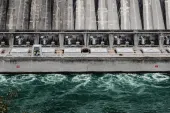Experts spar over Jinsha dam plans
Fighting has broken out again over hydropower development on China's Jinsha River.
Zhang Boting, deputy secretary general of the China Society for Hydropower Engineering, insists that plans to have hydroelectric dams less than 100 kilometres apart are not excessive.
He argued that there are 70 hydroelectric dams on the 1,000-kilometre Tennessee River, and in Europe similarly dense clusters of dams are found on rivers including the Rhine and the Danube.
Yang Yong, chief scientist at the Hengduan Mountains Research Institute and a member of the expert committee at the China Foundation for Desertification Control, accused Zhang of forgetting China's circumstances, of blindly applying foreign experiences to development of the Jinsha, and deliberately ignoring the fragility of ecosystems on the upper reaches of the river. He said the ecologies of the Jinsha and other rivers in south-west China areextremely sensitive, and cannot be directly compared with rivers overseas.
He added that Zhang is a spokesperson for industry interests and was a "person of confused logic" with a coarse attitude, who attacked and insulted those who held different views.
Zhang has denounced the "fake experts" he said were misleading journalists and the public, and rejected reports of an untrammelled dam frenzy in south-west China. He was reffering to Yang Yong.
Yang has been waging a battle to protect the Jinsha River from exploitation since 2004. He argues that plans for intensive development, involving 25 dams, will break the river up into sections of still water. This is not a good use of the Yangtze's resources, he says, and will affect fish migration.
Plans in the public domain include a cascade of 25 dams on the Jinsha River, which would generate as much electricity as four Three Gorges Dams put together. This would create a huge cluster of reservoirs - on
average, one every 100 kilometres.
There are, however, lessons to be drawn from abroad, Yang said: US and European dam-building is carried out as part of wider river management approach that is sensitive to the overall functions of the river ecosystem, he argued. In contrast, development of the Jinsha is more single-mindedly focused on hydropower, and could damage the river as a whole.
With 25 dams, the rapidly-flowing Jinsha River will be sliced into sections of passive water, changing the hydrology of the entire basin, he said. The environment, habitat and lifecycles of state-protected fish
like the Chinese paddlefish and the Dabry's Sturgeon will be impacted.
For more.



















 Advertise
Advertise







